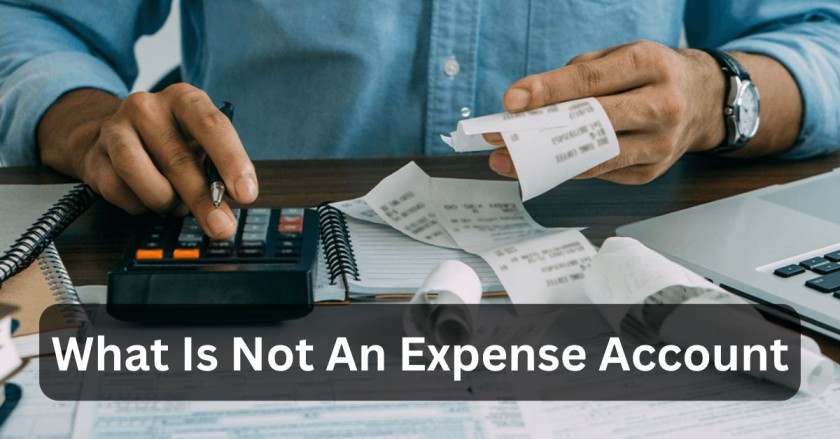What Is Not An Expense Account – The Ultimate Guide!
In the realm of accounting, expense accounts play a crucial role in recording the costs incurred by a business in its day-to-day operations. Properly categorizing expenses is essential for accurate financial reporting, tax compliance, and strategic decision-making.
However, not everything that a business spends money on qualifies as an expense account. Understanding what constitutes an expense account and what does not is vital for maintaining financial integrity and transparency.
In this article, we will explore the concept of expense accounts and identify items that do not belong in this category.
Expense Accounts – Definition and Purpose!
Expense accounts are crucial components of a company’s financial structure, as they serve to categorize and track the various costs incurred in the day-to-day operations of the business.
Within the company’s chart of accounts, these expense accounts provide a systematic framework for organizing financial transactions, allowing for efficient tracking and reporting of expenditures.

Examples of expenses commonly recorded in these accounts include salaries for employees, utility bills, rental expenses for office space, expenditures on supplies, and costs related to advertising and marketing efforts.
By meticulously recording these expenses under specific categories, businesses can gain valuable insights into their spending patterns and make informed decisions to optimize resource allocation and improve overall financial performance.
The primary function of expense accounts is to document the outflow of resources or financial obligations that arise as a result of the business’s normal operating activities.
Whether it’s paying employees, covering overhead costs, or investing in promotional activities, these expenses represent the ongoing costs necessary to sustain and grow the business.
By accurately recording these expenses, businesses can track their financial health, monitor budgetary adherence, and assess the efficiency of their operations.
Additionally, expense accounts play a crucial role in generating financial statements, such as the income statement, which provides stakeholders with a comprehensive overview of the company’s revenues, expenses, and profitability.
What is Not an Expense Account!
1. Capital Expenditures:
Capital expenditures, also known as capex, are investments in long-term assets that provide future economic benefits to the business.
These expenditures typically involve acquiring or improving assets like property, plant, equipment, or intangible assets such as patents or trademarks.

Unlike expenses, which are recorded on the income statement and deducted from revenue to calculate net income, capital expenditures are capitalized and recorded as assets on the balance sheet.
They are then depreciated or amortized over their useful lives to reflect their gradual consumption or expiration.
2. Examples of capital expenditures include:
- Purchasing a new manufacturing equipment
- Constructing a building
- Acquiring a patent for a new product
Capital expenditures enhance the productive capacity or efficiency of the business and are expected to generate returns over multiple accounting periods.
While they involve an initial cash outlay, their benefits extend beyond the current period, making them ineligible for classification as expense accounts.
3. Prepaid Expenses:
Prepaid expenses refer to payments made in advance for goods or services that will be consumed or utilized in future accounting periods. Common examples of prepaid expenses include prepaid rent, insurance premiums, and prepaid subscriptions.
When a business makes a prepayment, it records the transaction by debiting the prepaid expense account and crediting the cash or bank account.
However, prepaid expenses do not represent immediate costs incurred in the current period but rather represent future benefits that will be realized over time.
As a result, they are not considered expenses until the corresponding goods or services are consumed or utilized.
Instead, prepaid expenses are gradually expensed through the process of amortization, with a portion of the prepaid amount being recognized as an expense each accounting period.
4. Investments:
Investments involve allocating funds with the expectation of earning a return or generating income over time.
While investments may involve the outlay of cash or other assets, they differ from expenses in that they are not directly related to the ongoing operations of the business.

Instead, investments represent the deployment of resources with the aim of achieving growth, diversification, or financial gain.
5. Common types of investments include:
- Stocks
- Bonds
- Mutual funds
- Real estate properties
Unlike expenses, which are incurred in the ordinary course of business, investments are held for strategic or financial purposes and are classified as assets on the balance sheet.
The returns generated from investments, such as dividends, interest income, or capital gains, are recorded separately from operating expenses and are reported as investment income on the income statement.
6. Drawings or Distributions:
Drawings or distributions refer to withdrawals of funds or assets by business owners or shareholders for personal use. These withdrawals represent a reduction in the owner’s equity or the shareholders’ equity in the business.
While drawings may involve the transfer of cash or other assets out of the business, they are not considered expenses because they do not represent costs incurred in generating revenue or operating the business.
Drawings are typically recorded by debiting the owner’s drawings account and crediting the cash or asset account being withdrawn.
From an accounting perspective, drawings represent a distribution of profits or capital rather than an expense incurred in the ordinary course of business.
As such, they are not reported on the income statement but are reflected in the statement of changes in equity or the equity section of the balance sheet.
Conclusion:
Not every expenditure made by a business qualifies as an expense account. Understanding what constitutes an expense account and what does not is crucial for maintaining financial integrity and transparency.
FAQs:
1. What are expense accounts?
Expense accounts are categories within a company’s financial system used to track costs associated with operating the business, such as salaries, utilities, and advertising expenses.
2. Why is it important to understand expense accounts?
Understanding expense accounts ensures accurate financial reporting, budget management, and strategic decision-making within the organization.
Read Also:



